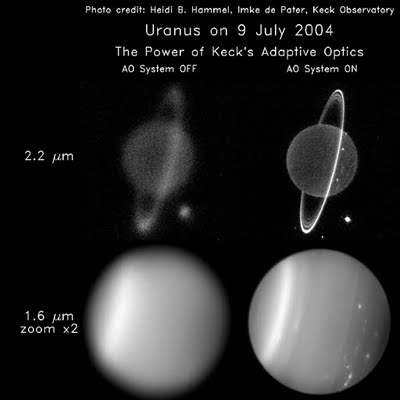
Tag: AO
Four Lasers on the Galactic Center
Another great video from my friend Dan Birchall. There are more opportunities to see multiple lasers on the galactic center in coming months. I hope to get up and do some more shooting of my own.
Testing TBAD
TBAD is our Transponder Based Aircraft Detector, used to avoid illuminating an aircraft with the AO laser. A specially designed receiver that uses an antenna at the front of each telescope to detect the TCAS anti-collision transponder that is carried by all commercial and most civil aircraft.

Still, we are mandated to avoid the situation and to put in place measures to avoid such an occurrence. Before TBAD this involved hiring guys to sit outside and watch the skies for aircraft. I have done this, it can be pretty on a clear night with calm weather. It can be brutal on a cold and windy night. Even when taking precautions such as rotating two spotters every hour or two there is always the question of human fallibility under adverse conditions. Using an automated system like TBAD is far preferable.
Keck 2 Lasing
Four Lasers Aim for the Galactic Center
I am truly jealous! My friend Dan Birchall got the photo I had hoped to get… All four Mauna Kea lasers in operation at the same moment. Better yet, all four lasers were on the same target, the center of our Milky Way galaxy. The result is a great photo of four yellew beams converging to the same spot in the sky.

The four beams come from our two Keck telescopes, plus one from Gemini and one from Subaru. the lasers are used to create reference beacons for the adaptive optics systems used on these large telescopes. I will, with a little possessive pride, point out that the Keck lasers are much more powerful than the others.
The scheduling of all four lasers at once is a rare occurrence. All four lasers on the same target? Even more luck was involved! It helps that Dan is a telescope operator and spends far more dark time on the summit than most of us. He took advantage of the situation correctly… Grabbing the camera and shooting.
Below is more footage from Dan, a little time lapse of the telescopes working…
Postcard from the Summit – Laser
AO Cabling
AO Cables
NPR Segment on Keck Adaptive Optics
A nice NPR piece on Keck AO today. A decent discussion of the history and advantages of adaptive optics.
For Sharpest Views, Scope The Sky With Quick-Change Mirrors
It used to be that if astronomers wanted to get rid of the blurring effects of the atmosphere, they had to put their telescopes in space. But a technology called adaptive optics has changed all that.
Always a good thing when a system I put so much of my life into receives some good press!

Sticky Worm
It began, as all these things do, with a phone call from Liz…
“It’s stuck”
“What is stuck?”
“SFP won’t move in K2AO.”
“Do not try to move it any further, I am up tomorrow for SegEx, I will go look at it.”

SFP is different, it can crash into the rotator if it gets lost. There is no real way to fix this issue, it has to be this way. SFP stands for Simulator Fiber Positioner, an artificial star created with a optical fiber. Placing the tip of the fiber at the telescope focus creates a bright dot of light that we can use to align and calibrate the AO system. The three axis stage can move the fiber into the light path and accurately position it just where you need it for system tests. There is also a diagonal mirror used to inject light from the telescope simulator and the spectral calibration source mounted atop the simulator.




